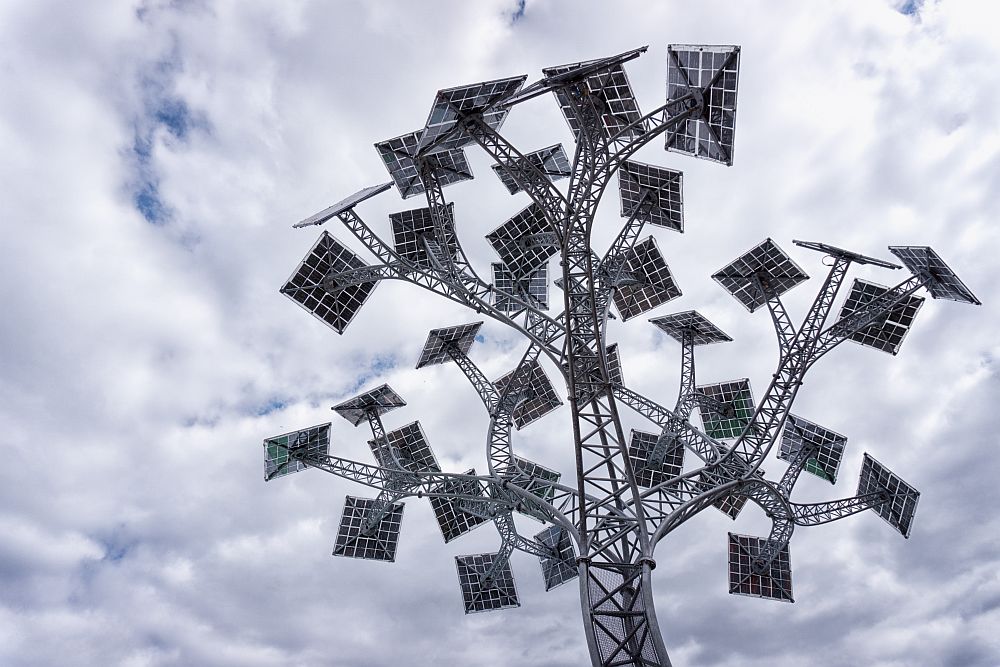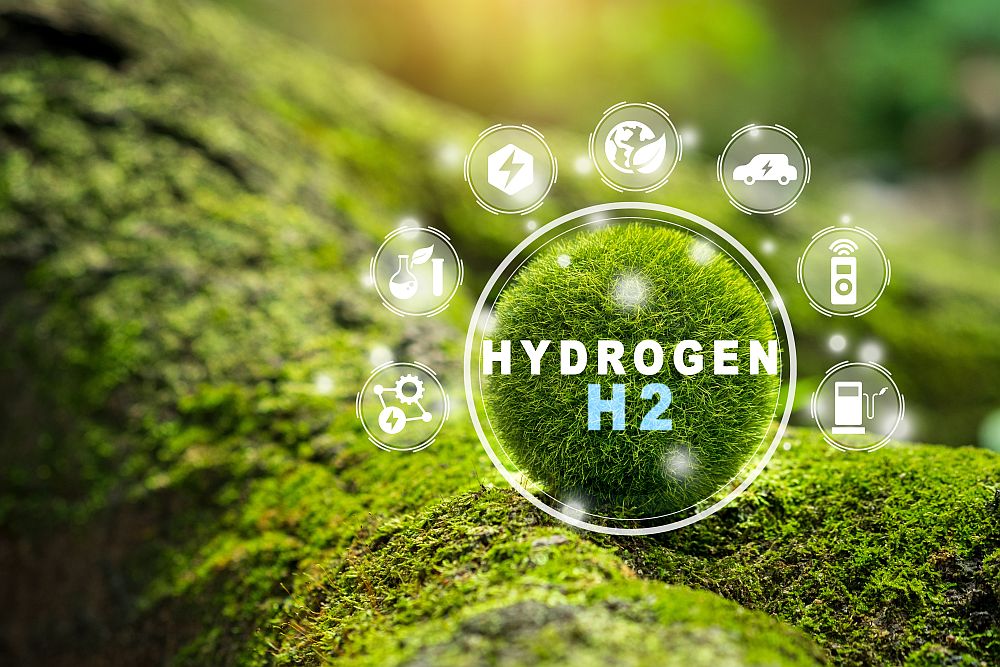[Image above] CdTe solar cells on a flexible metal foil (left), and electron microscopy image of the solar cell structure in the substrate configuration. From top: front electrical contact, CdTe layer, metal back contact. The layers were deposited on a glass substrate for clarity of EM imaging. Credit: Empa.
Summer is winding down in the northern hemisphere, but the impending change of seasons is not slowing down interest in solar research. As we recently reported, the cost of solar installations is being driven down by a flood of inexpensive polysilicon PV cells as well as by advances in thin film technologies that offer a lower-cost alternative to polycrystalline silicon.
Thin film solar cells based on cadmium telluride technology are curently the primary alternative to silicon. Companies like First Solar, a commercial producer of CdTe thin-film cells, manufacture the cells by depositing CdTe thin films on glass using a “superstrate” configuration (pdf)—i.e., the semiconducting CdTe thin film is actually deposited on the underside of a glass sheet, then sandwiched along with conducting layers between another layer of glass during production.
First Solar has been commercially successful using this approach, which is still less expensive than using relatively thick slabs of silicon. But manufacturing CdTe cells using a “substrate” configuration—depositing the thin film on top of the substrate material—would drive down production costs even further and increase the number of potential solar applications by enabling production using flexible substrate materials such as metal foils.
The problem: Attempts to produce CdTe cells on metal foil substrates have resulted in very low efficiencies compared with commercially available CdTe cells. In theory, p-type doping of the CdTe thin film with copper should increase efficiency, but the material has proved resistant to doping, according to this news release from Empa, the Swiss Federal Laboratories for Materials Science and Technology, Dübendorf.
“People have tried to dope CdTe cells in substrate configuration before but failed time and again,” Ayodhya Nath Tiwari, head of Empa’s laboratory for Thin Films and Photovoltaics, says in the release.
That didn’t stop Tiwari’s team from trying. They used high-vacuum copper evaporation onto the CdTe layer followed by heat treatment to promote penetration of copper atoms into the thin film. The scientists’ work to deposit the correct amount of copper—it turned out an atom-thick layer worked best—paid off. The team produced cells on metal foil substrates with efficiencies up to 11.5 percent. Results of the work are reported in Nature Communications (DOI: 10.1038/ncomms3306).
The researchers are optimistic that there is more upside to the copper doping technology they have developed, according to Stephan Buecheler, a group leader in the lab and study coauthor. “Our results indicate that the substrate configuration technology has a great potential for improving the efficiency even further in the future,” he says in the release. The team’s short-term goal is to reach 15 percent efficiency, “but I’m convinced that the material has the potential for efficiencies exceeding 20 percent,” Buecheler concludes.
Author
Jim Destfani
CTT Categories
- Energy
Related Posts
‘Fairy circles’ may help mark natural underground hydrogen deposits
September 18, 2025



